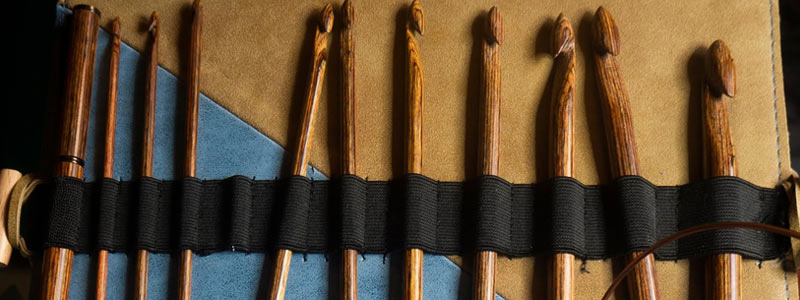Tunisian crochet has been described as a cross between knitting and crochet but it is much closer to crochet in technique and movement.
The craft uses a long hook or as in our Deluxe Ginger hook set, a hook with an interchangeable cable and cable stopper attached. This allows you to make your projects as wide as you want.
In Tunisian crochet each row involves two “passes”. On the first pass you work into the row below in a similar way to crochet but leaving the loops on your hook. Then, on the second pass you work back from left to right through the loops until you are back to just one stitch.

By varying how you work into the row below you can create fabric with either a woven or a knitted look.
Because you use a larger size hook (generally two sizes up) than you would in traditional crochet, your project grows quickly once you get to grips with the stitches.

It is a fun technique with plenty of online tutorials and is great for creating accessories such as scarves and wraps, and homewares such as blankets and cushions because of the squishy, thick fabric you can create. When learning start with the simple stitch and the full stitch as pictured here to get the hang of creating the stitches and working the two pass rows. Then you can move on to a wider range of stitches.
We have picked out a few patterns to get you started.

This pretty 4ply shawl uses the Tunisian simple stitch and an eyelet pattern. It is recommended for confident crocheters wanting to try their first Tunisian project.
Summer's Day Placemats by Kim Guzman
These placemats are a good way to practice your Tunisian crochet including how to change colours.

Pencil Box Blanket by Sharon Carter
Once you get more confident with colourwork in Tunisian crochet you could tackle something like this interesting modular blanket.












